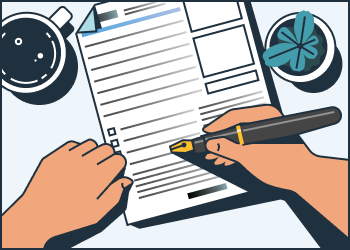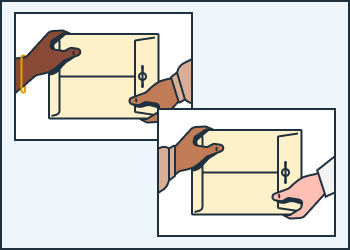How to get a debtor's examination
If you need information about what the person or business who owes you money earns or owns, you can get a court order for them to come to court to answer questions (called a debtor's examination) about what they earn or own. You can use this information to try to collect the money owed to you.
Consumer debt is money you owe for personal or household things — like buying clothes, groceries, or paying for family needs.
It does not include:
-
Rent you owe
-
Unpaid wages
-
Fines owed to employees
-
Debts caused by fraud or harm (like someone suing you for an injury)
Check your court judgment
To find out if your case is about consumer debt, look at the judgment papers you got from the court.
-
In small claims cases:
If you got a Notice of Entry of Judgment (form SC-130 or form SC-200)
-
For form SC-130, look at item 10
-
For form SC-200, look at item 9
-
If either of these are checked, then it’s a consumer debt case.
-
-
If your judgment isn’t on one of these forms:
You’ll need to read the judgment to see if it says it includes an amount that “concerns consumer debt (Code Civ. Proc., § 708.111).”
If you’re not sure, talk to your court’s small claims advisor or a lawyer to get help.
Jump to:
🔗 Note: All court form links open in a new tab so you don’t lose your place.
You can’t ask the court to order someone to go to a judgment debtor exam if they live or have a business more than 150 miles away from the county where you started your case.
Instead, you must file your Application and Order for Appearance and Examination (form EJ-125) in the county where that person lives or has a business.
Steps to file in a different county
-
Get an Abstract of Judgment (form EJ-001) from the court where your case is now.
-
Fill out Application and Order for Appearance and Examination (form EJ-125)
-
Write a short statement that says:
You can write this on a Declaration (form MC-030) and attach it to your EJ-125 form.
-
The person lives or has a business more than 150 miles from the court where your case is.
-
Because of this, the exam needs to happen in the county where they live or do business.
-
-
File the forms in the court in the county where the person lives or does business.
📌 This court will only handle the exam. Everything else in your case still happens in the court where your case started.
How to ask for a debtor's examination
-
Fill out a form

Fill out Order to Produce Statement of Assets and to Appear for Examination (form SC-134).
This forms tells the other person they must:
-
Come to court to answer questions about what they earn and own
-
Give you a filled-out Judgment Debtor’s Statement of Assets (form SC-133)
If they already gave you form SC-133, fill out Application and Order for Appearance and Examination (form EJ-125) instead.
Form EJ-125 only makes them come to court to answer questions.
Use this form instead of form SC-134.
-
-
Get a subpoena if you need paperwork
If you want the other person to bring papers to court—like bank statements or pay stubs—you need a court order called a subpoena.
Use Small Claims Subpoena and Declaration (form SC-107).
⚠️ Don’t fill it out yet.
A court clerk must issue the subpoena before you fill it out.
Bring the blank subpoena when you file your form SC-134. The clerk can issue it at the same time. After it’s issued, you can fill it out.
-
File your form and get a court date
Take the original and copies of your form SC-134 to the court clerk. The clerk will stamp them and give you a court date.
💵 Pay the $60.00 filing fee. Ask for a receipt. You can ask the court to make the other person pay you back for this later.
If you have a subpoena, ask the clerk to issue it. Subpoenas don’t get filed.
After it’s issued, fill it out to list the papers you want the person to bring to court.
Page 2 of the subpoena has a list of common documents people ask for after a trial. Check the boxes for the ones you want—like pay stubs, bank records, or property info.
-
Have the court papers delivered (served)

Unless the court gives you permission to do something else, you must have the sheriff or a professional process server deliver (serve) the issued order for appearance and examination and the subpoena, if you have one.
⚠️ Not all sheriff’s offices will serve your forms. Contact them first to ask if they will.
Give the sheriff or process server:
-
A copy of your form SC-134 and form SC-107, if you used it
-
Written instructions with:
-
The person’s name and address
-
The best time of day to try to serve them
-
A description of the person
-
You’ll need to pay a service fee. The sheriff usually charges around $40 (unless you have a fee waiver).
Professional process server fees vary, so ask about the cost first.
The server must deliver the papers at least 30 days before the court date.
-
-
Check in with server
Check in with the server a few days before your court date to find out if the forms were served (if they don't contact you first).
If the other side was served, your server will usually fill out and file a Proof of Service with the court. If they don't, get this from them and file it with the court.
Key takeaways
-
A debtor’s examination is a court process that helps you find out what the other person earns or owns so you can collect money they owe you.
-
To start the process, fill out Order to Produce Statement of Assets and to Appear for Examination (form SC-134).
-
If you want the person to bring paperwork (like bank statements), you need a subpoena (form SC-107). A court clerk must issue it before you fill it out.
-
You must file the forms with the court and pay a $60 fee (unless you have a fee waiver). The court will give you a court date.
-
Have a sheriff or professional process server deliver the papers. You can’t serve them yourself.
-
The server must deliver the forms at least 30 days before the court date and fill out a Proof of Service.
-
If your case is a consumer debt case, different rules apply. Get help with consumer debt debtor’s exams.
Debtor's Examination
What's next?
Once you've filed your forms, you can start to prepare for your court date.

